The Design and Fabrication of a MEMS Electronic Calibration Chip
Abstract
1. Introduction
2. Structural Design of Calibration Sheet
3. Device Fabrication Process Flow
4. Device Performance Test
5. Conclusions
Author Contributions
Funding
Data Availability Statement
Acknowledgments
Conflicts of Interest
References
- Rebeiz, G.M.; Muldavin, J.B. RF MEMS switches and switch circuits. IEEE Microw. Mag. 2001, 2, 59–71. [Google Scholar] [CrossRef]
- Rumiantsev, A.; Ridler, N. VNA calibration. IEEE Microw. Mag. 2008, 9, 86–99. [Google Scholar] [CrossRef]
- Deng, Z.; Wang, Y.; Deng, K.; Lai, C.; Zhou, J. Novel High Isolation and High Capacitance Ratio RF MEMS Switch: Design, Analysis and Performance Verification. Micromachines 2022, 13, 646. [Google Scholar] [CrossRef] [PubMed]
- Viera, J.A.; Pelletier, M.G. Low-Cost Electronic Microwave Calibration for Rapid On-Line Moisture Sensing of Seedcotton. Sensors 2010, 10, 11088–11099. [Google Scholar] [CrossRef] [PubMed]
- Yin, Y.; Zhong, B.; Kan, J.; Wang, W.; Zhang, J. Research on development and calibration technology of solt calibration chip on 40GHz ceramic substrate. J. Microw. Power 2014, 30, 80–83. [Google Scholar]
- Yin, Y.; Zhang, X.; Gao, M. Development of S-parameter standard sample of coplanar waveguide on GaAs substrate. J. Microw. Power 2017, 33, 6. [Google Scholar]
- Wang, S.; Wu, Q.; Gao, Y.; Yu, J.G.; Cao, Q.L.; Han, L.L.; Li, M.W. A novel multifunctional electronic calibration kit integrated by MEMS SPDT switches. Chin. Phys. B 2021, 30, 118501. [Google Scholar] [CrossRef]
- Yang, Y.H.; Chen, D.J.; Wu, F.B. Microstructure, hardness, and wear resistance of sputtering TaN coating by controlling RF input power. Surf. Coat. Technol. 2016, 303, 32–40. [Google Scholar] [CrossRef]
- Purroy, F.; Pradell, L. New theoretical analysis of the LRRM calibration technique for vector network analyzers. IEEE Trans. Instrum. Meas 2001, 50, 1307–1314. [Google Scholar] [CrossRef]
- Ridler, N.M.; Nazoa, N. Using simple calibration load models to improve accuracy of Vector Network Analyzer measurements. In Proceedings of the 2006 67th ARFTG Conference, San Francisco, CA, USA, 16 June 2006. [Google Scholar]
- Haddadi, K.; Lasri, T. Forward V-band vector network analyzer based on a modified six-port technique. In Proceedings of the 2015 IEEE Topical Conference on Wireless Sensors and Sensor Networks (WiSNet), San Diego, CA, USA, 25–28 January 2015. [Google Scholar]
- Adamian, V. Simplified Vector Network Analyzer Design Using an Electronic Calibrator. In Proceedings of the 45th ARFTG Conference Digest, Orlando, FL, USA, 19–19 May 1995. [Google Scholar]
- Zhao, W.; Zhao, Y.J.; Yuan, C.H.; Qin, H.B.; Qiang, L. A calibration procedure for two-port vector network analyzer based on 10-term error model. Acta Electron. Sin. 2011, 39, 2469. [Google Scholar]
- Wojnowski, M.; Issakov, V.; Sommer, G.; Weigel, R. Multimode TRL Calibration Technique for Characterization of Differential Devices. IEEE Trans. Microw. Theory Tech. 2012, 60, 2220–2247. [Google Scholar] [CrossRef]
- Papantonis, S.; Ridler, N.M.; Lucyszyn, S. A new technique for vector network analyzer calibration verification using a single reconfigurable device. In Proceedings of the 82nd ARFTG Microwave Measurement Conference, Columbus, OH, USA, 18–21 November 2013. [Google Scholar]
- Han, L.; Wang, Y.; Wu, Q.; Zhang, S.; Wang, S.; Li, M. A novel low-loss four-bit bandpass filter using RF MEMS switches. Chin. Phys. B 2022, 31, 1–6. [Google Scholar] [CrossRef]
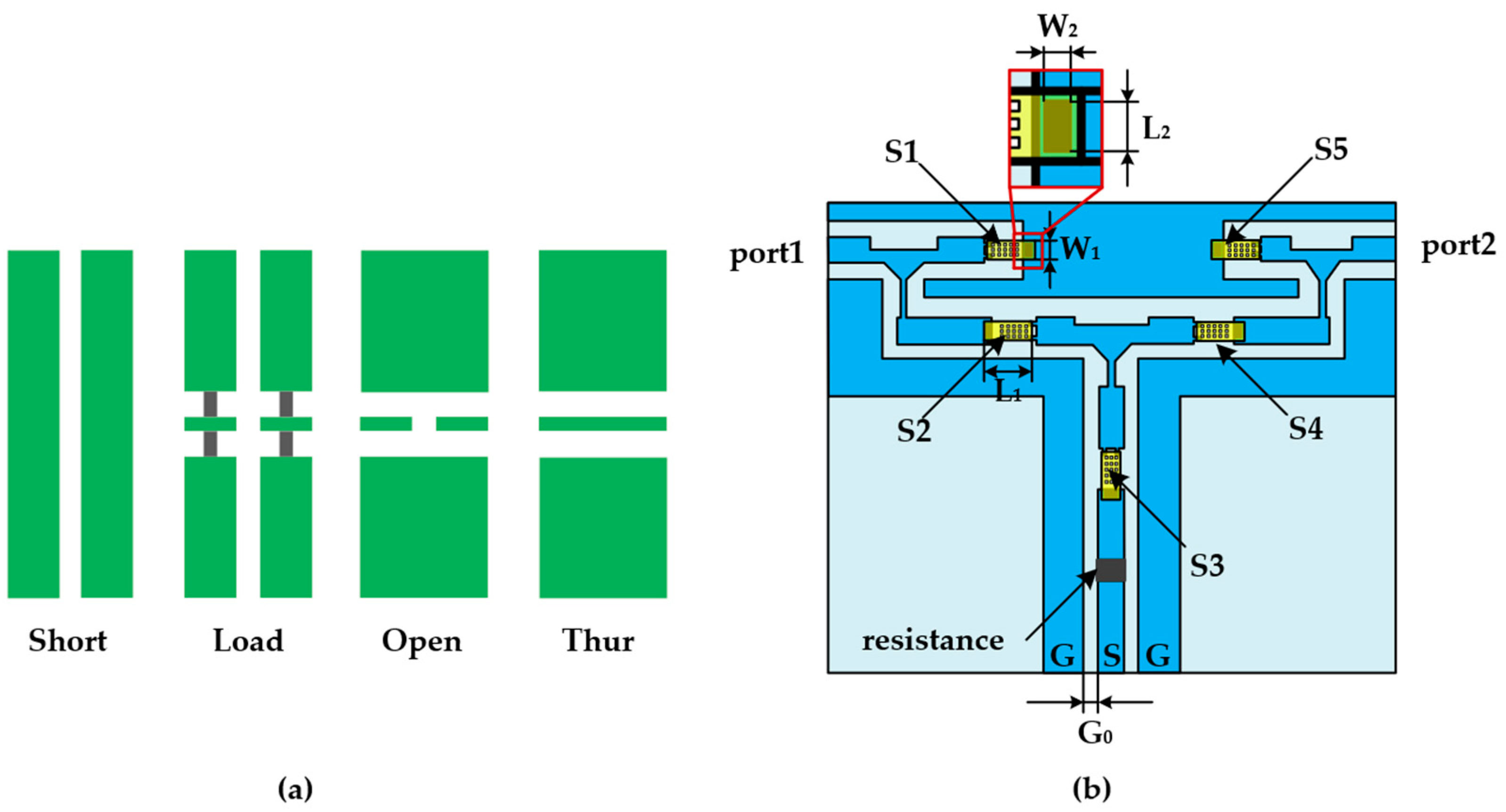
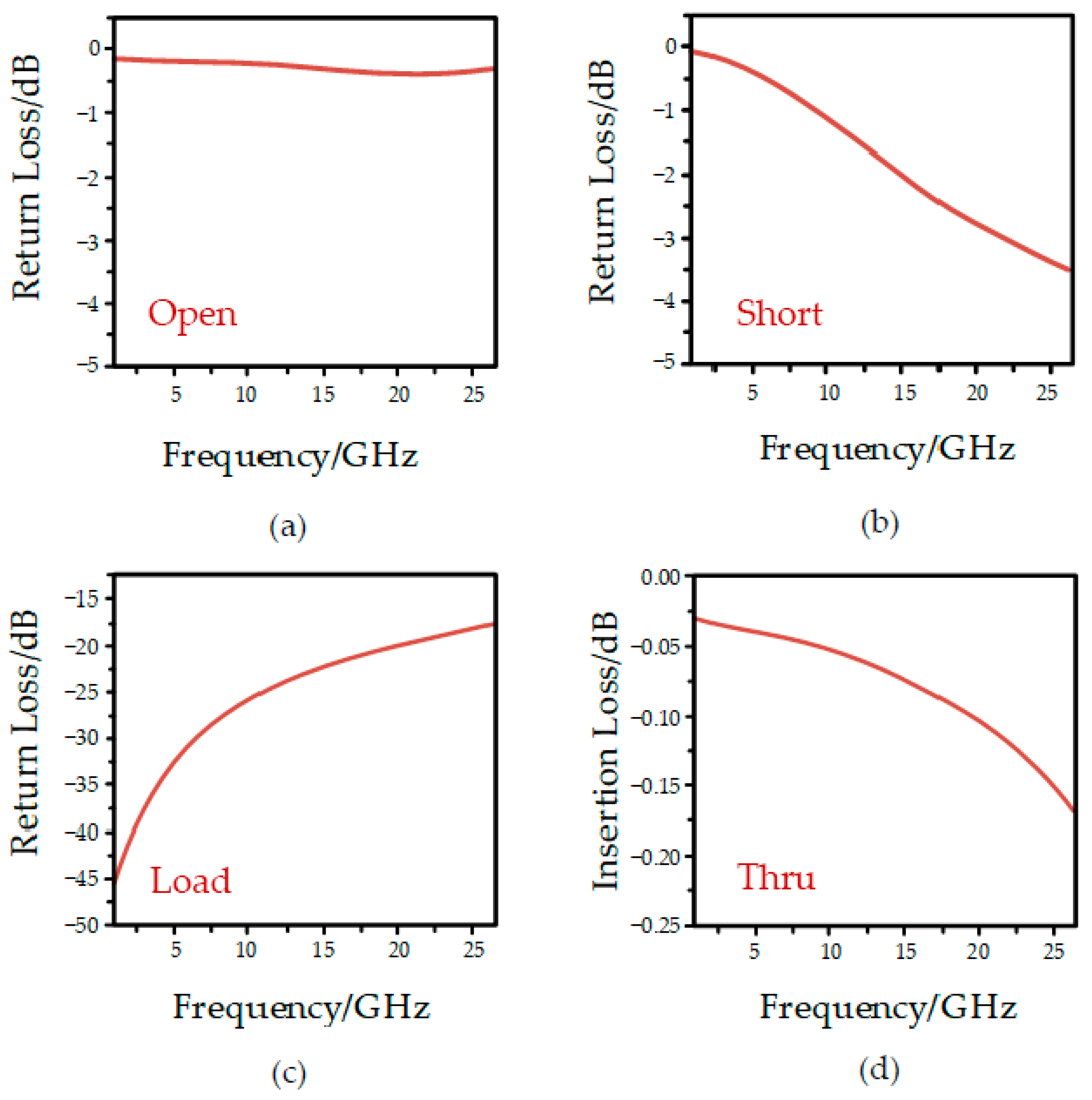
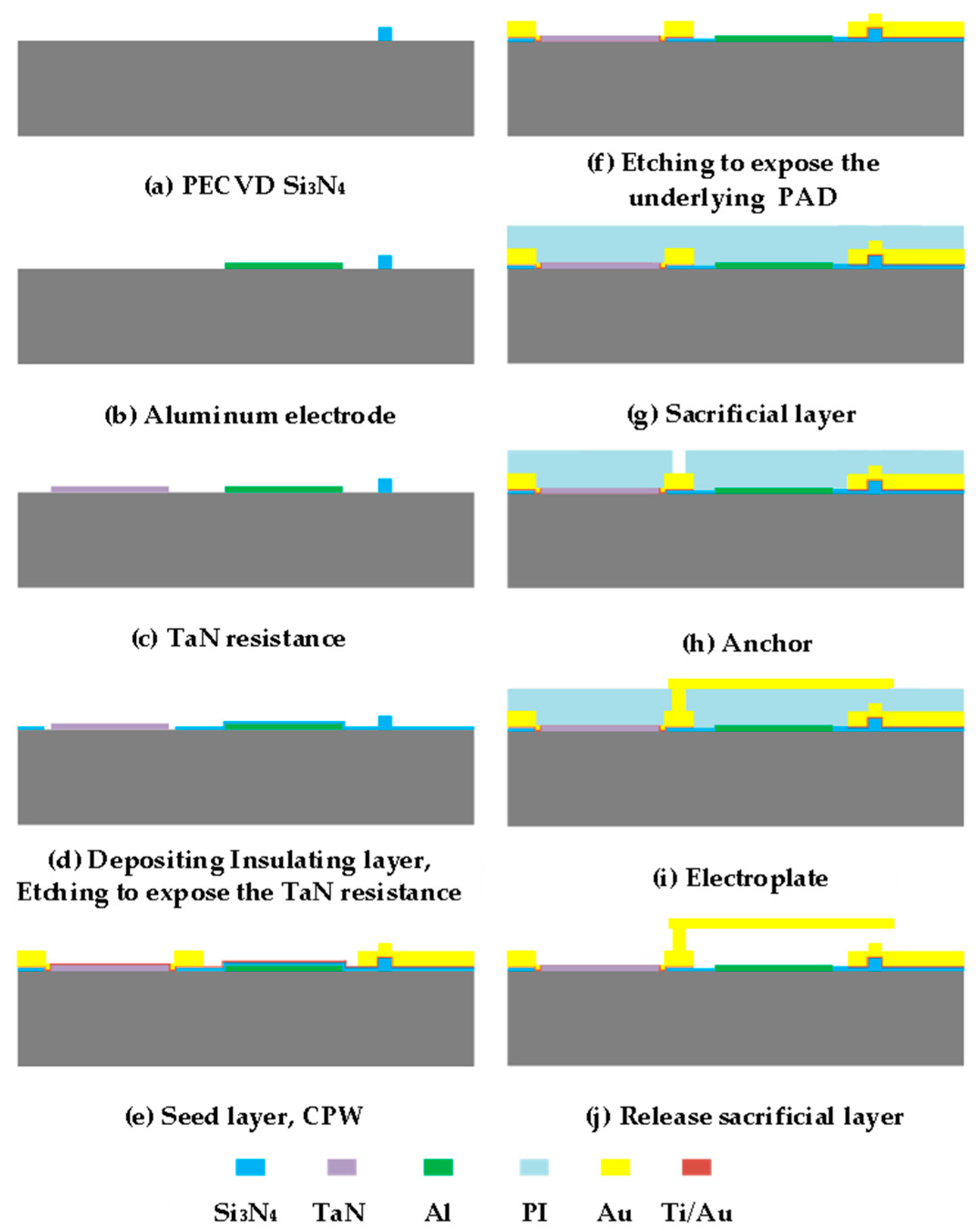
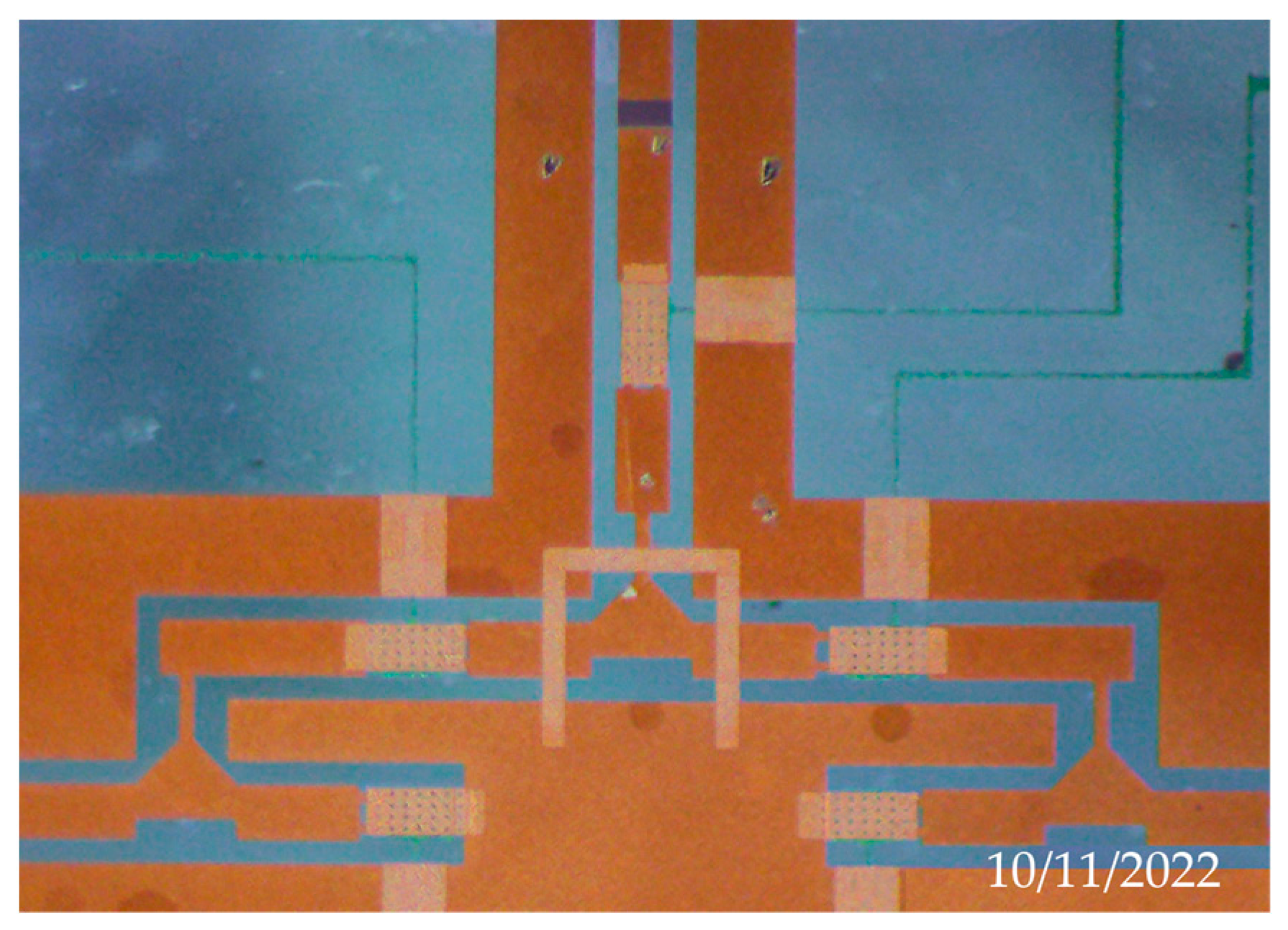
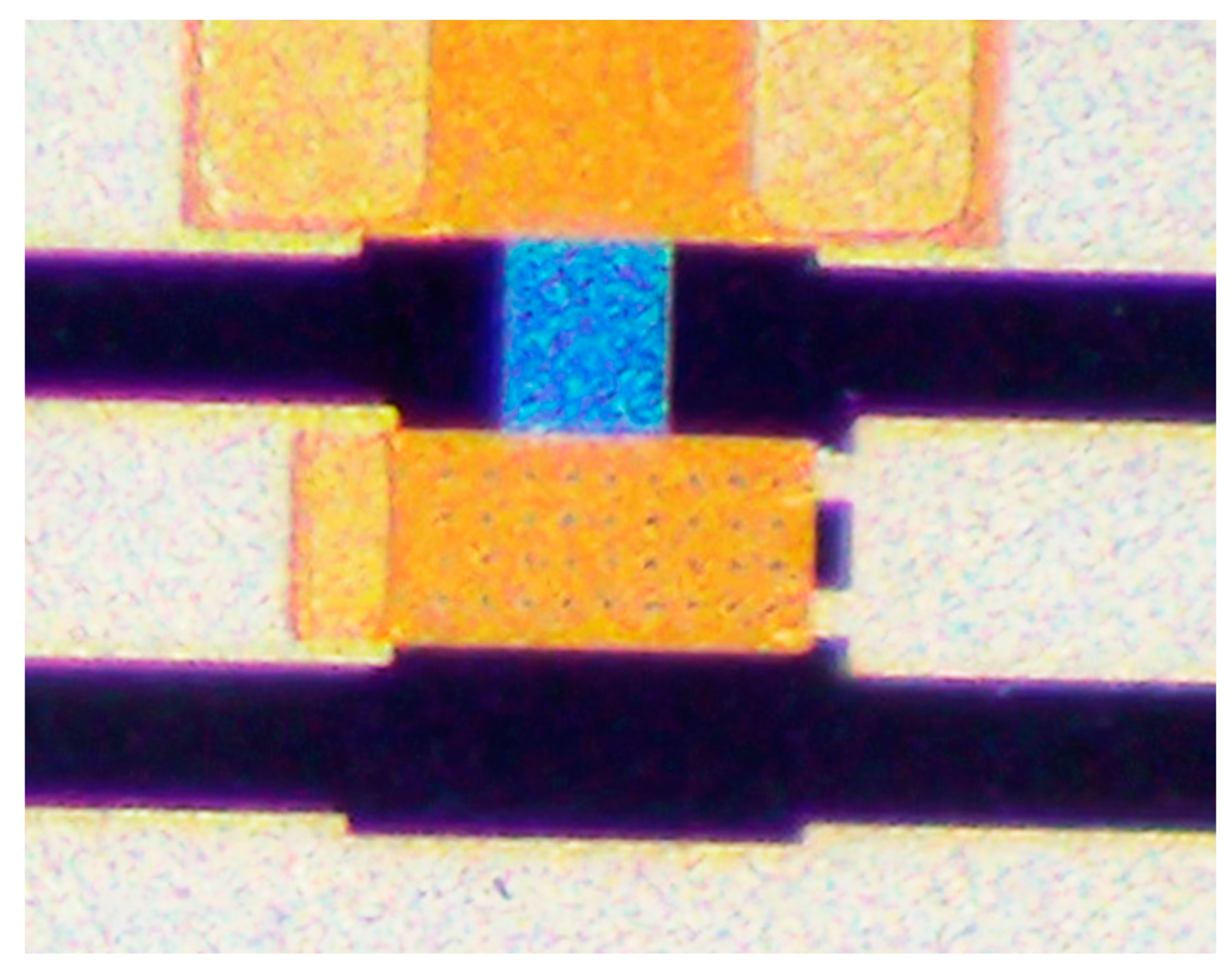
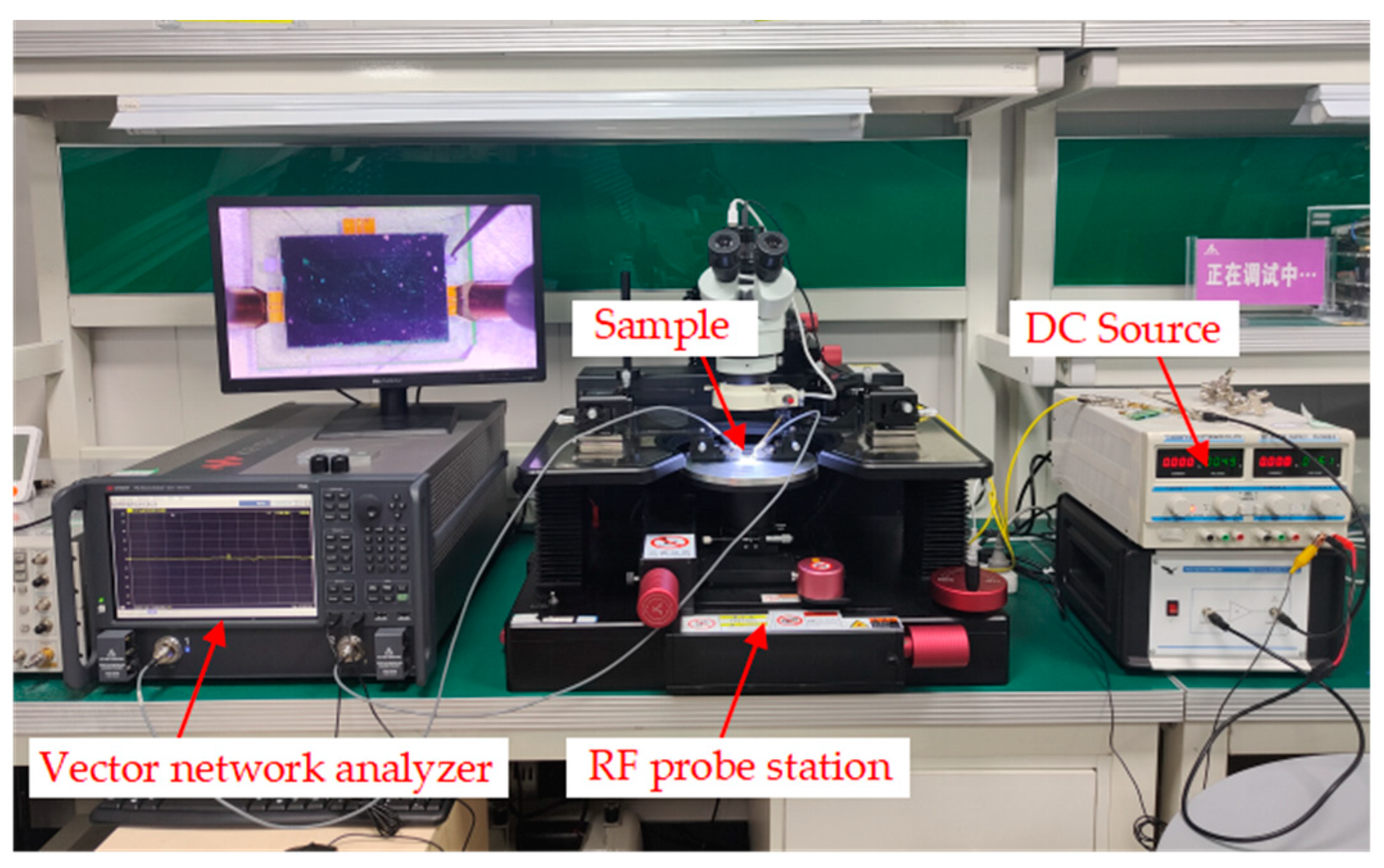
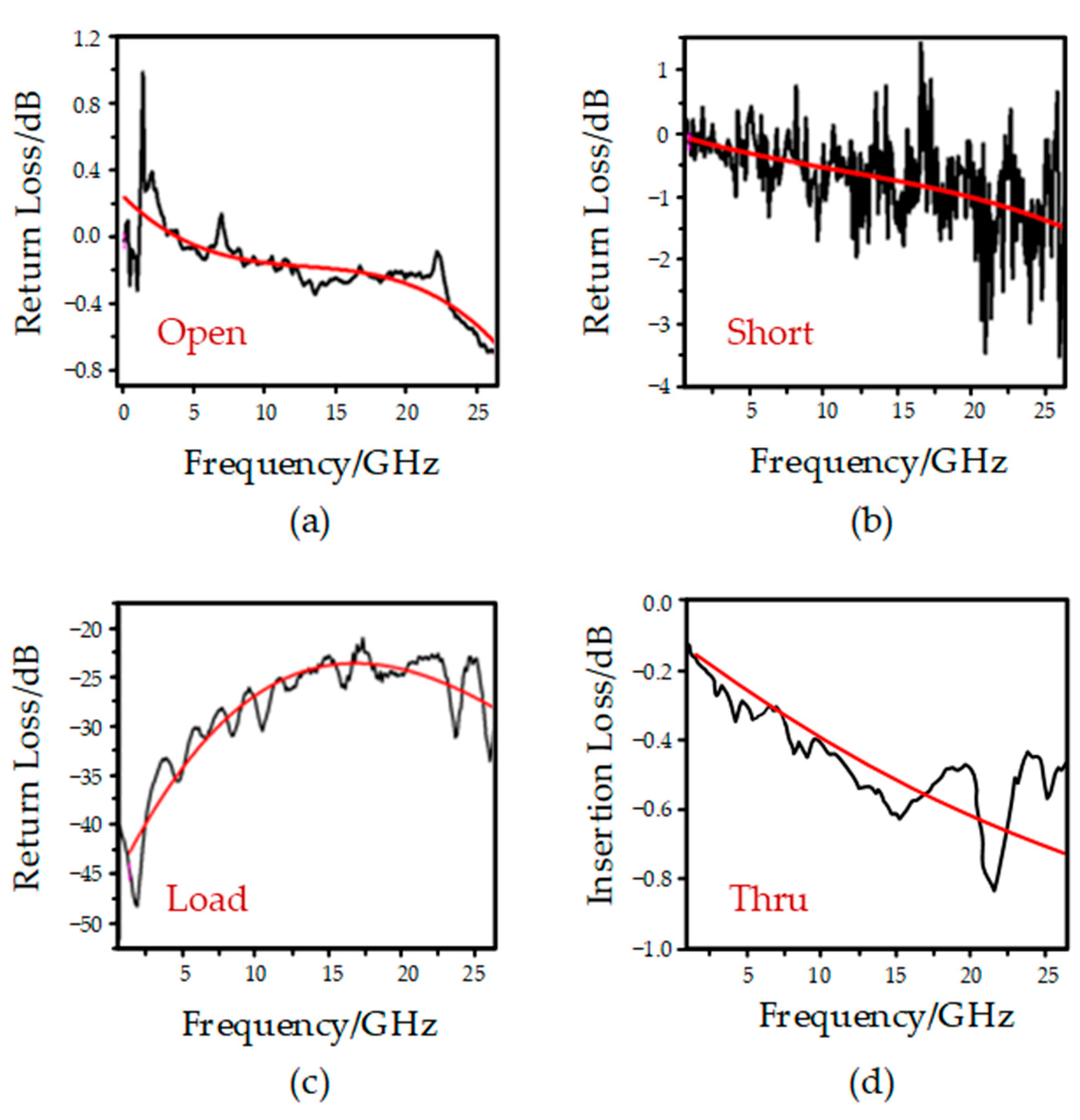
| S.no | Design Parameter | Values/μm |
|---|---|---|
| 1 | CPW (G-S-G) | 75-120-75 |
| 2 | Bridge length (W1) | 250 |
| 3 | Bridge width (L1) | 100 |
| 4 | Signal line gap (G0) | 3 |
| 5 | Anchor length (L2) | 80 |
| 6 | Anchor width (W2) | 20 |
| State | S1 | S2 | S3 | S4 |
|---|---|---|---|---|
| thru | 0 | 1 | 0 | 1 |
| open | 0 | 0 | 0 | 0 |
| short | 1 | 0 | 0 | 0 |
| load | 0 | 1 | 1 | 0 |
| State of Calibration | Simulation Result | Test Result |
|---|---|---|
| Open | S11 < 1.0 dB | S11 < 0.7 dB |
| Short | S11 < 3.5 dB | S11 < 3.5 dB |
| Load | S11 < 20 dB | S11 < 25 dB |
| Thru | S21 < 0.20 dB | S21 < 1.0 dB |
Publisher’s Note: MDPI stays neutral with regard to jurisdictional claims in published maps and institutional affiliations. |
© 2022 by the authors. Licensee MDPI, Basel, Switzerland. This article is an open access article distributed under the terms and conditions of the Creative Commons Attribution (CC BY) license (https://creativecommons.org/licenses/by/4.0/).
Share and Cite
Wu, Q.; Chen, Y.; Cao, Q.; Zhao, J.; Wang, S.; Wang, J.; Li, M. The Design and Fabrication of a MEMS Electronic Calibration Chip. Micromachines 2022, 13, 2139. https://doi.org/10.3390/mi13122139
Wu Q, Chen Y, Cao Q, Zhao J, Wang S, Wang J, Li M. The Design and Fabrication of a MEMS Electronic Calibration Chip. Micromachines. 2022; 13(12):2139. https://doi.org/10.3390/mi13122139
Chicago/Turabian StyleWu, Qiannan, Yu Chen, Qianlong Cao, Jingchao Zhao, Shanshan Wang, Junqiang Wang, and Mengwei Li. 2022. "The Design and Fabrication of a MEMS Electronic Calibration Chip" Micromachines 13, no. 12: 2139. https://doi.org/10.3390/mi13122139
APA StyleWu, Q., Chen, Y., Cao, Q., Zhao, J., Wang, S., Wang, J., & Li, M. (2022). The Design and Fabrication of a MEMS Electronic Calibration Chip. Micromachines, 13(12), 2139. https://doi.org/10.3390/mi13122139






